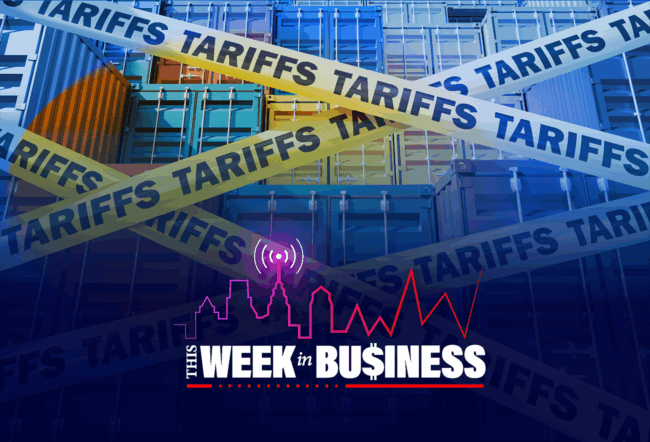Home prices in the U.S. could begin to see solid gains a year from now, by which time the Federal Reserve may have ended its yearlong spree of raising interest rates, according to Susan Wachter, Wharton professor of finance and real estate, who is also co-director of the Penn Institute for Urban Research. “An upsurge [in home prices] could occur as soon as it’s clear that interest rates are not going to head higher,” she said on the Wharton Business Daily radio show that airs on SiriusXM. (Listen to the full podcast above.) Due to low inventory, she had disagreed with those who forecast a 20% decline in house prices. “I never was among that group, and I do not think this will happen going forward.” Wachter added that she conditions this forecast on a shallow recession, if there is one.
Home price trends have given out mixed signals of late. They had fallen slightly for seven straight months since their post-pandemic peak in June 2022 but showed some recovery between January and April 2023, according to the latest S&P CoreLogic Case-Shiller Home Price Index. Home prices rose by a seasonally adjusted 0.5% in April 2023 (the latest month for which data is available) in the 20 major U.S. cities that the index tracks. But that increase may not be sustainable for the near term given potential dampeners of a rise in mortgage rates after a July increase in the Fed fund’s rate and continuing economic weakness.
How Home Prices Will Rebound
The Fed will have the opportunity to stop raising rates only “when we have clarity that inflation is under control — when it gets into the 3% range, which I believe actually could happen within a year,” Wachter said. “I’m an optimist on this.” (Editor’s note: Wachter’s interview with Wharton Business Daily took place on July 6. On July 12, the Labor Department announced that inflation fell to 3% in June.)
With inflation holding at 3%, the Fed would likely stop raising rates she predicted.
That is when the housing market’s fortunes will begin rebounding, Wachter said. “At that point, we will see an increase in inventory and an increase in buying. And this logjam that’s holding back residential [real estate] will start easing. And depending on how strong the economy is, the [sales activity] increases could be significant.”
In the meantime, housing markets are grappling with “an affordability crisis that will persist,” Wachter said. A surge in new construction isn’t helping much because “it’s costly” to build, she added. “Home prices are holding [firm], and for many, rents too are at very unaffordable levels.” The housing crisis is not the potential threat of a destabilizing dramatic decline, but rather the reality of too high prices, she added.
“We have a small-bank, commercial real estate lending issue that is not resolved.”— Susan Wachter
Bleak Outlook for Commercial Real Estate
A different set of drivers is shaping a crisis in commercial real estate, especially rising vacancies and fears of increasing distress among banks with exposure to the sector. Hopes have been dashed of a reversal of remote working and a return to physical offices. Consequently, vacancies have shot up, dampening rent levels and office space valuations. Vacancies in the bellwether Class A office space market are at nearly 18%, according to a report by the National Association of Realtors.
“Remote work is, to a large extent, here to stay,” Wachter said. “And it’s hitting office markets and office values, particularly older, lower quality [properties]. Thirty percent of the buildings have 90% of the vacancy. Downtowns with a large share of older buildings are in a valuation quagmire.”
The coastal markets, especially the San Francisco Bay Area, are the worst hit, she added. Exceptions include office use sectors such as life science and lab space that depend more on in-person activity and finance that depends on collaborative efforts and mentoring of junior colleagues, she noted.
A Small-bank Commercial Real Estate Lending Crisis
The unfolding crisis could spill over to the banking sector, especially small banks. The uncertainty over the health of banks’ exposure to the commercial real estate sector has all but frozen fresh lending. With limited leasing activity, “all lenders to commercial real estate are pulling back,” Wachter said. “There’s about $6 trillion in commercial real estate debt out there. About 60% of that is held by banks, and 70% of that is [made up of] small banks. So, we have a small-bank, commercial real estate lending issue that is not resolved. It’s going to get worse.”
As the Fed battles inflation with interest rate increases, smaller banks are hit especially hard, Wachter continued. Higher interest rates raise banks’ funding costs (read higher interest rates on deposits), and it comes at a time when their real estate loan portfolio is underperforming, she added.
Wachter said she didn’t expect the crisis in the real estate markets to become “systemic” like the 2007 subprime housing mortgage crisis. “Nonetheless, we may have banks failing. Depositors, of course, will be protected, which means bailouts with taxpayer money. But this will not happen in a crisis mode, bringing down the economy. It undoubtedly will get worse, and how much worse it will get or how it will resolve depends on the bigger question of inflation and Fed policy.”



